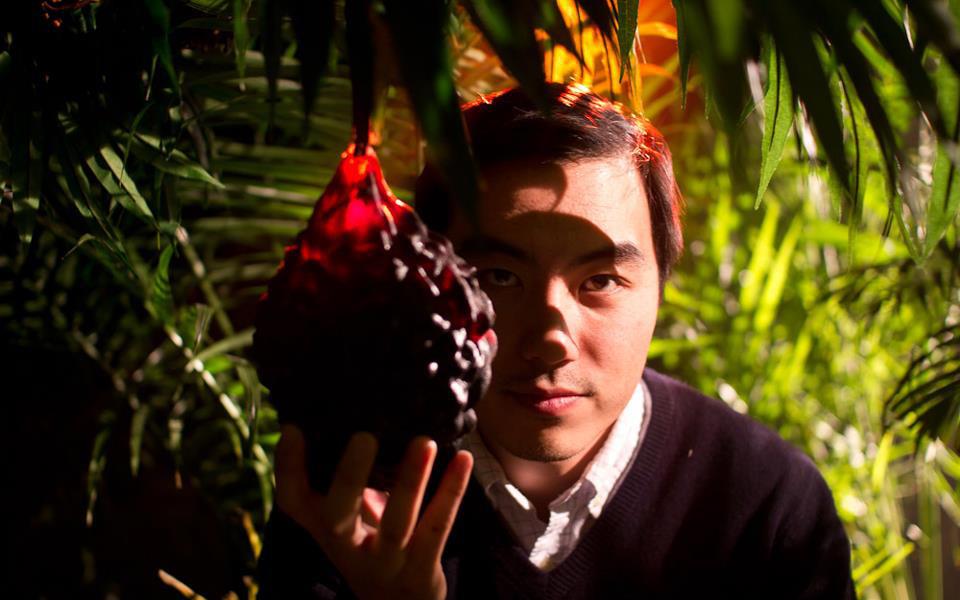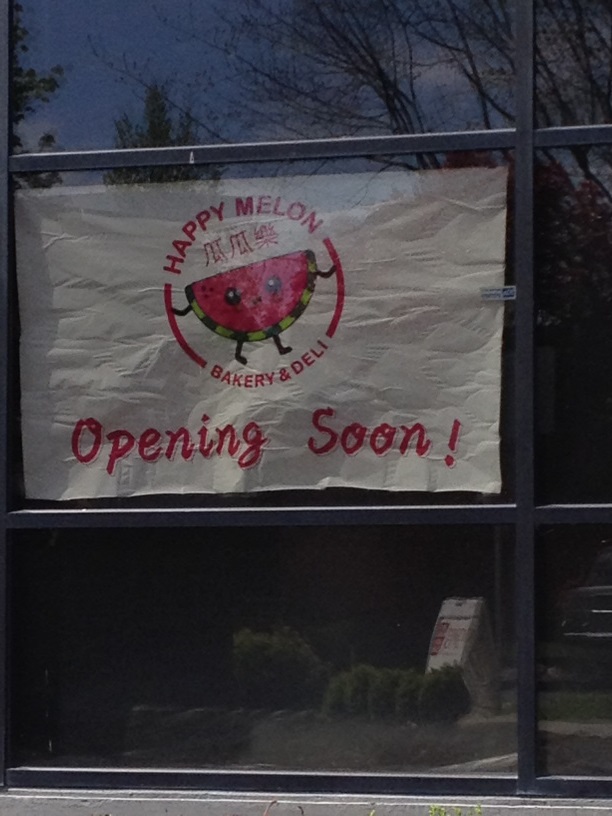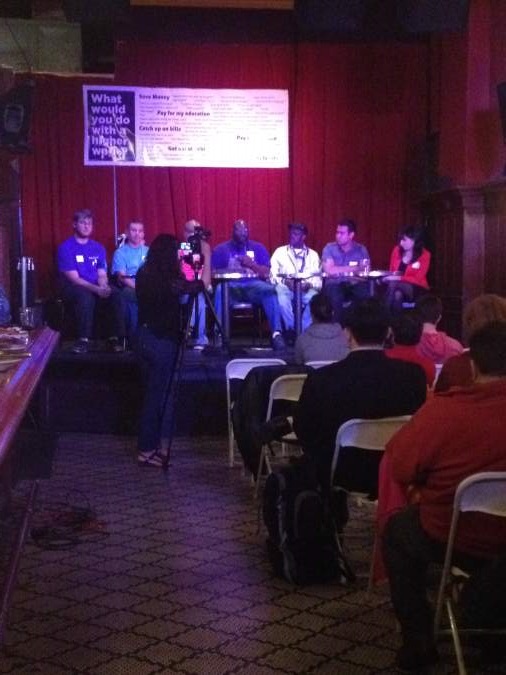During a post-dinner stroll down the residential stretch of Northeast 65th Street that serves as Casa D’Italia‘s home block, I noticed my companions had emerged from the folksy eatery with a distinct red-sauce glow. “That was so good,” one of them said, emphasizing his point with more o’s than Campbell’s Soup squeezes into a can of circular spaghetti. “So good,” his date assented.
It seemed cordial to agree, but “good” is a loaded adjective for a professional restaurant critic. Was it good when I had to coax vivacity from a sullen gorgonzola cream sauce with a salt shaker? Was it good when my rigatoni wept oil? Over the course of two multicourse meals, had I encountered any dishes worth quoting to skeptics who aren’t keen on seeking out noodles and cheese in Ravenna?
Such clear-eyed reasoning would have been impossible within the confines of the 32-seat restaurant, made even smaller by a clutter of family photographs, cookbooks with broken spines, olive-oil tins, and pasta boxes. In the dimly lit dining room, a tidal pool of hospitality, it feels heartless to size up dishes scrawled on a chalkboard that’s updated according to what chef and owner Anthony Donatone found on his most recent market trip. Only a very bitter diner could quibble with meatball cooking times and Chianti temperatures while a server was gently explaining gluten-free options to a concerned guest and Donatone was quietly prodding a staffer to check whether the bathrooms were still spotless.
Casa D’Italia is disarmingly likable, a trait that’s so, so good in a field too often dominated by the humorless precision of persnickety cooking and the coldness of incessant budget calculations. As I told my smitten tablemates, it’s a restaurant to which I would eagerly return.
Repeat visitors account for a healthy portion of Donatone’s clientele. On football Saturdays, he caters lunches for relocated Seattle residents who consider a slice of ricotta cheesecake as critical to a successful trip home as a Husky victory. He keeps lists of which guests like elk and which like venison so he can alert them early in the week to a planned menu appearance. “They get in their minds on Tuesday that they’re going to eat boar on Saturday,” he says.
“I want to make it right by people when they come through the doors,” says Donatone, a Bay Ridge, Brooklyn native who’s worked in Italian-American kitchens in Miami, Chicago, the Virgin Islands, and on Arthur Avenue—the outer-borough Little Italy that long ago surpassed Mulberry Street as a toy chest for eaters obsessed by manicotti and mascarpone. “We do what we can to make somebody else’s night good.”
Donatone lived briefly in Ravenna before heading south for a final vagabond cooking gig, and patronized the grocery store that previously occupied the storefront he now rents. “I’d stop in, grab a Snapple, grab some chips,” he says. Donatone chatted up the landlord while he was there, forging a relationship that proved helpful when a “closed for repairs” sign was installed in the store’s window.
“I told him I was interested,” Donatone says. “I didn’t know what I was going to do.”
Casa D’Italia opened on Sept. 4, 2001, or—in New York vernacular—one week before 9/11. Cash-strapped from the start, Donatone furnished the restaurant with plastic tables, borrowed pots from his 95-year old grandmother, and bought utensils from the Salvation Army. Then, as now, he had one refrigerator and a six-burner stove, although only five of the burners could be commissioned for cooking; the other is permanently reserved for boiling water.
Before his guests curtailed their curfews so they could help their children with homework, Donatone kept the restaurant open until 11 p.m. “Now, by 8:30 p.m., there’s two tables,” he grumbles. In those days, Casa D’Italia sometimes fed more than 100 guests an evening. The record stands at 147 covers, a number achieved by fashioning extra-cozy seating arrangements and using all nine tables on the enchanting back patio.
Donatone tries to extend the patio season with heaters, but come October few customers agree to stray beyond the red-walled dining room. The restaurant has the overstuffed look of a great-aunt’s rent-controlled apartment, thanks to inherited knickknacks from various relatives.
Yet for all the overtures Donatone makes toward timelessness, he’s not leery of change. He likes to shop three times a week, so he’s not stuck with an endless case of eggplant, and makes a point of tinkering with background music no matter how many times customers request the same Frank Sinatra songs. “You go someplace and at 8:00, the same song’s always on—that doesn’t go with me,” he says.
There is a standard menu at Casa D’Italia, but it’s largely an assemblage of Donatone’s building blocks: The entrée list includes pasta with pesto, pasta with meatballs, and pasta with marinara sauce. Since it’s far wiser to order a main dish off the chalkboard of noodle-based brainstorms that servers tote from table to table, the menu is most useful for its antipasti list.
It’s a testament to the value of practice that the antipasti I sampled were the most technically correct dishes I found at Casa D’Italia. A plate of anchovies and strips of roasted red peppers, coddled past crispness, were expertly daubed with olive oil to underscore the warm earthiness of the dish. The same treatment provides an abracadabra moment for taut green olives strewn with sea salt and made alluringly pungent by hand-grated pecorino. Fresh arugula elevates a simple green salad, and a caprese studded with gumball-sized orbs of mozzarella is a lovely rendition of the dish.
For post-patio months, there is pasta e fagioli soup, made with hearty white beans, and a homespun minestrone that tastes as though it simmered while its maker traded gossip with a neighbor and hung laundry on the line.
“We grew up where nothing was ever thrown out,” Donatone says. “I was one of those Italians who, if I didn’t eat the vegetables on my plate, I was the kid at school with a frittata in my lunch bag.”
The smallness of Donatone’s enterprise means he can’t produce a nightly parade of pastas. One noodle style—it could be penne, fusilli, orecchiette, or some other shape, depending on Donatone’s whim—serves as the base layer for every preparation. While the featured proteins are terrifically fresh, the pastas I tried were frustratingly flawed: Pasta submerged in a tomato cream sauce and dotted with pink salmon was showered with too much dill; rigatoni tossed with peppery sausage was saturated with oil; and a carbonara was overwhelmed by smoky bacon drippings. The grand size of the portions makes it impossible to ignore sins of excess. “I don’t believe in feeding you with an eyedropper, if you know what I mean,” says the chef.
Donatone encourages sharing, perhaps not wishing to deny any diner the chance at dessert. The spongy ricotta cheesecake has acquired fans as far away as Tennessee, according to the restaurant’s shipping records, but the tray of cookies baked by Donatone’s wife, Angeli, is the ideal closing order. The assortment changes, but frequently includes flaky biscotti, adorably sentimental butter cookies with colored sprinkles, chewy almond concoctions, and crisp anise-seed rings, each variety seated in its own fluted baking cup.
Two years ago, Donatone stopped shopping at the Salvation Army. He now buys his plates and bowls from IKEA, although he still hasn’t hired a maintenance crew or stopped worrying about the economy. “I talked to my buddy back in New York, he tells me about places closing that have been around for 20, 25 years,” he says. “I don’t know what I’d do. I wouldn’t go get a job at Costco in the meat department.”
Rather than think about job prospects beyond the restaurant, Donatone would rather focus on the improvements he’d pursue if his landlord would sell him the building. He’d like to fix up the basement and maybe put a wine bar down there. He imagines his sons—Frankie, 7, and Andre, 3—someday joining him in the kitchen.
“Maybe Frankie will bring his buddies on bikes for spumoni,” he says. “That’s what I’m hoping.”
Price Guide
Roasted peppers $9
Olives with cheese $9.50
Caprese $10.75
Cookie tray $4.75








